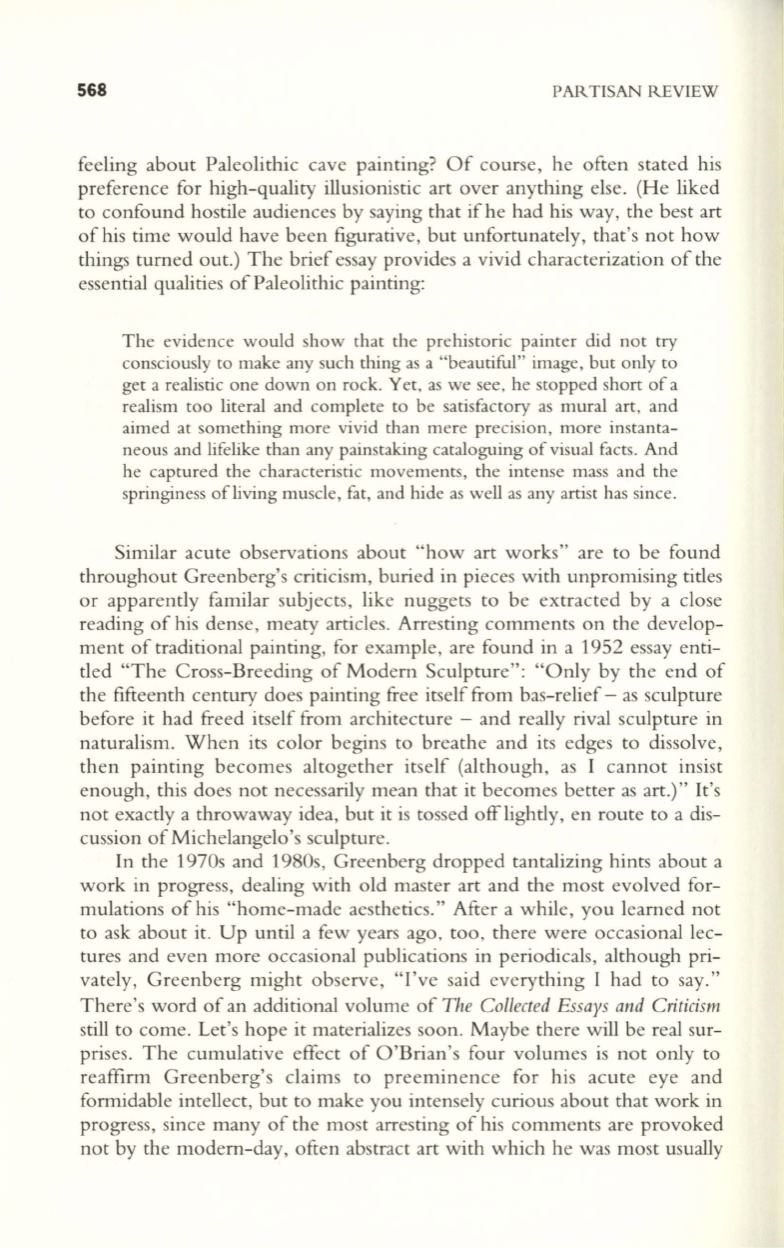
568
PAH.TISAN REVIEW
feeling about Paleolithic cave painting? Of course, he often stated his
preference for high-quality illusionistic art over anything else. (He liked
to confound hostile audiences by saying that if he had his way, the best art
of his time would have been figurative, but unfortunately, that's not how
things turned out.) The brief essay provides a vivid characterization of the
essential qualities of Paleolithic painting:
The evidence would show that the prehistoric painter did not try
consciously to make any such thing as a "beautiful" image, but only to
get a realistic one down on rock. Yet, as we see, he stopped short of a
realism too literal and complete to be satisfactory as mural art, and
aimed at something more vivid than mere precision, more instanta–
neous and lifelike than any painstaking cataloguing of visual facts. And
he captured the characteristic movements, the intense mass and the
springiness of living muscle, fat, and hide as well as any artist has since.
Similar acute observations about "how art works" are to be found
throughout Greenberg's criticism, buried in pieces with unpromising titles
or apparently familar subjects, like nuggets to be extracted by a close
reading of his dense, meaty articles. Arresting comments on the develop–
ment of traditional painting, for example, are found in a 1952 essay enti–
tled "The Cross-Breeding of Modern Sculpture": "Only by the end of
the fifteenth century does painting free itself from bas-relief - as sculpture
before it had freed itself from architecture - and really rival sculpture in
naturalism. When its color begins to breathe and its edges to dissolve,
then painting becomes altogether itself (although, as I cannot insist
enough, this does not necessarily mean that it becomes better as art.)" It's
not exactly a throwaway idea, but it is tossed off lightly, en route to a dis–
cussion of Michelangelo's sculpture.
In the 1970s and 1980s, Greenberg dropped tantalizing hints about a
work in progress, dealing with old master art and the most evolved for–
mulations of his "home-made aesthetics." After a while, you learned not
to ask about it. Up until a few years ago, too, there were occasional lec–
tures and even more occasional publications in periodicals, although pri–
vately, Greenberg might observe, "I've said everything I had to say."
There's word of an additional volume of
The Collected Essays and Criticism
still to come. Let's hope it materializes soon. Maybe there will be real sur–
prises. The cumulative effect of O'Brian's four volumes is not only to
reaffirm Greenberg's claims
to
preeminence for his acute eye and
formidable intellect, but to make you intensely curious about that work in
progress, since many of the most arresting of his comments are provoked
not by the modern-day, often abstract art with which he was most usually


